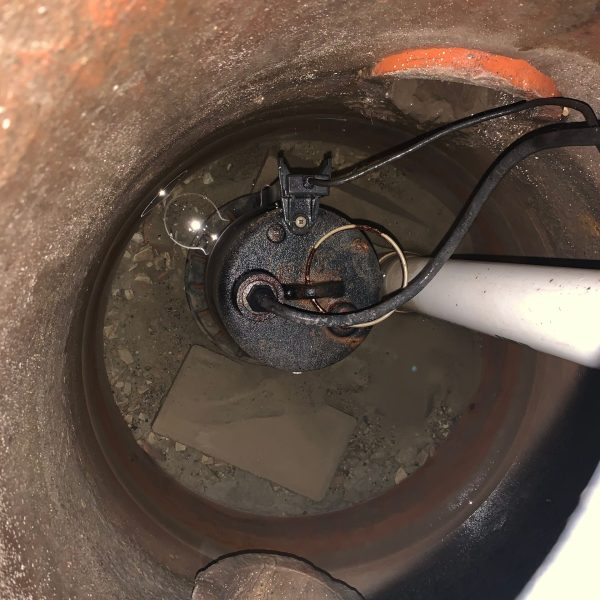Sump pump installation
Sump pump installation

Sump Pump Installation in Toronto
A sump pump is a critical component in protecting homes from water damage, particularly in areas like Toronto, where heavy rainfall and seasonal flooding can cause significant challenges. Whether dealing with a high water table, storm runoff, or basement leaks, installing a sump pump is an effective way to prevent flooding and maintain a dry, safe living environment.
What is a Sump Pump?
A sump pump is a small pump installed in the lowest part of a basement or crawl space. Its primary purpose is to keep the area under the building dry and prevent flooding by directing water away from the home’s foundation. The pump sits inside a pit, known as a sump pit, which collects water. When the water reaches a certain level, the pump automatically activates and removes the water from the pit, discharging it safely away from the foundation.
For homes in Toronto, which often face issues related to water intrusion due to unpredictable weather, the installation of a sump pump provides a much-needed line of defense against water damage.
Benefits of Installing a Sump Pump
1. Prevents Flooding and Water Damage
The most significant advantage of a sump pump is its ability to prevent flooding. Water damage can be expensive and disruptive, often leading to long-term structural issues if not managed properly. A sump pump acts as a safeguard by automatically pumping out excess water before it has a chance to cause damage. This protection is especially crucial for basements and crawl spaces, which are more prone to flooding due to their location beneath ground level.
2. Protects Property and Valuables
A flooded basement can ruin furniture, electronics, and other valuable items stored there. Installing a sump pump ensures that the area stays dry, preserving property and valuable possessions. It also prevents the growth of mold and mildew, which can thrive in damp environments, contributing to health problems and further property damage.
3. Increases Property Value
Homebuyers are more likely to invest in a property with effective waterproofing measures already in place. A sump pump system signals to potential buyers that the home is protected against flooding and water damage. For homeowners in Toronto, where wet basements can be a concern, having a sump pump installed can be a strong selling point that enhances property value.
4. Minimizes Health Risks
Damp basements not only threaten the structural integrity of your home but also create an environment where mold and mildew can thrive. These fungi release spores into the air, which can cause allergic reactions, respiratory problems, and other health issues. By installing a sump pump, you’re ensuring that your home stays dry, preventing the growth of these harmful organisms.
Types of Sump Pumps
When considering sump pump installation, it’s important to know the different types available:
Submersible Sump Pump
- This type of pump is installed below the water line in the sump pit, making it less obtrusive and quieter during operation. Submersible pumps are ideal for homes where noise reduction is a priority.
Pedestal Sump Pump
- Pedestal pumps sit above the sump pit, with the motor elevated above water. While they are noisier than submersible pumps, they tend to be less expensive and easier to maintain due to the motor’s accessibility.
The Sump Pump Installation Process
Professional sump pump installation ensures the system functions properly and provides maximum protection. Here’s what to expect during the installation process:
Assessment of the Area
- The installation process begins with a thorough assessment of your basement or crawl space. The installer will determine the lowest point where water collects and identify the best location for the sump pit. In most cases, this area is chosen based on the natural flow of water in the space.
Excavating the Sump Pit
- A sump pit is then excavated in the identified location. The pit needs to be deep enough to collect water effectively but must also accommodate the sump pump. The size of the pit will depend on the specific needs of the property and the type of pump being installed.
Installing the Pump
- Once the sump pit is dug, the pump is installed. Depending on whether you choose a submersible or pedestal sump pump, the installer will ensure that the pump fits securely in the pit and is connected to a reliable power source.
Discharge Line Installation
- After the pump is in place, a discharge line is installed to carry water away from the house. This line must be placed at an appropriate distance from the foundation to prevent water from re-entering the basement. In Toronto, where homes are often subject to municipal codes and regulations regarding water drainage, the discharge line must comply with local standards.
Testing the System
- The final step in the installation process is testing the system. The installer will fill the sump pit with water to ensure the pump activates as expected and that the discharge line functions properly. This test confirms that the system is working and that the home is protected from potential water damage.
Why Professional Installation Matters
While it may be tempting to attempt a DIY sump pump installation, professional installation is highly recommended. Proper installation ensures the system operates efficiently and can prevent future issues. Professional installers understand the nuances of sump pump systems and local Toronto regulations, ensuring the pump is set up correctly and in compliance with municipal codes.
Moreover, having the installation done by a licensed and experienced technician offers peace of mind, knowing the system is built to last and capable of handling Toronto’s often unpredictable weather patterns. This also ensures the warranty of the sump pump remains intact, which may not be the case with a DIY installation.
Ongoing Maintenance for Long-Term Reliability
Once a sump pump is installed, ongoing maintenance is necessary to ensure its long-term reliability. Homeowners should periodically check the system, especially during the rainy season, to make sure it’s operating smoothly. Annual professional inspections are also recommended to identify any potential issues early on, such as blockages in the discharge line or electrical problems.
Others services
The cost of sump pump installation in Toronto depends on factors like the type of sump pump, the complexity of the installation, and any additional materials required. For an accurate estimate, consult with a local plumbing expert who can assess your specific needs.
While costs vary, a sump pump installation typically includes the price of the pump itself, labor, and any necessary modifications to the drainage system. Reaching out to a licensed plumber for a detailed quote is the best way to understand the full cost.
Yes, a licensed plumber can install a sump pump. They have the expertise to ensure the system is installed correctly, efficiently, and in compliance with local building codes, providing peace of mind that your property is protected from potential water damage.
The cost to fit a sump pump can vary depending on factors like the size and type of pump, the complexity of the installation, and whether additional components, like a backup battery, are needed. It's best to request a quote from a plumbing professional to get a clear idea of the total cost.
